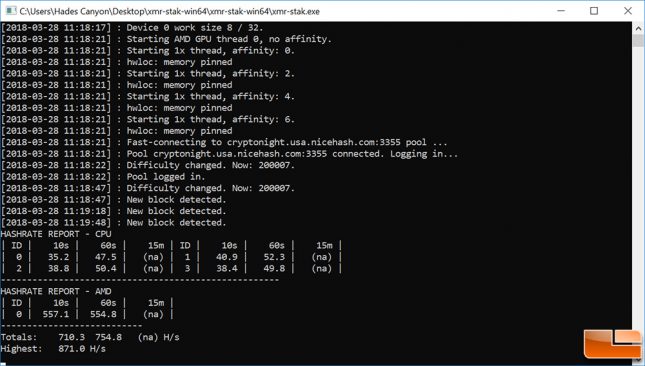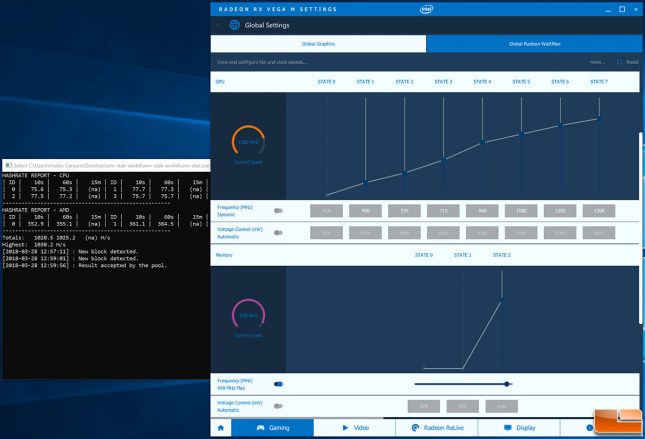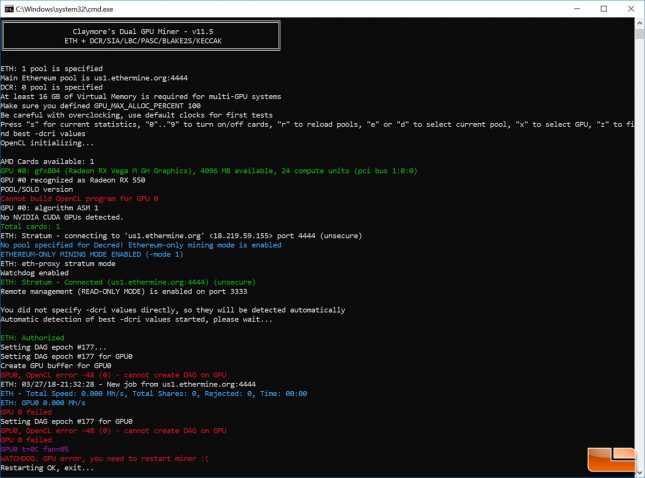Intel Hades Canyon NUC8i7HVK NUC Review – Radeon RX Vega M GPU
Hades Canyon Mining Performance – Ethereum and Monero
Over the past year cryptocurrency mining has greatly risen in popularity, so we figured we’d spend some time mining alt coins on Intel’s Hades Canyon NUC to see how it performs. Hundreds of thousands of people around the world are purchasing PCs with high performance CPUs and gaming graphic cards to mine on. Hades Canyon has a powerful processor and Vega M GPU, so it should do okay granted it doesn’t overheat.
Running XMR-Stak-Win64 straight out of the box gave us between 700-900 H/s of mining performance at 126 Watts and a temperature of around 60C.
After tweaking the config file a bit and overclocking the Vega M GPU up to 1300 MHz on the core and 940 MHz on the HBM2 memory we were able to break the 1000 H/s barrier just barely by getting in the 1020 to 1030 H/s range. Power draw went from 126 Watts mining XMR with stock setting up to 155 Watts, but it should be noted that we didn’t do any tweaks for lowering power. Temperatures were in the 65-67C range in an air conditioned room.
Right now with cryptocurrency prices tanking, you’d make about $0.45 per day in profit after electric expenses by running Nicehash-CryptoNight on an overclocked Hades Canyon setup 24/7. That means it would take over 6-years to make $999 back to cover the barebone price of this system.
We also ran Claymore’s Dual GPU Miner v11.5 to see how Ethereum mining performance was and discovered that it would error out. The application was unable to create the DAG on the GPU due to OpenCL issues. We contacted Intel and let them know about this issue a couple days ago and they have not gotten back to use with any solution.
Let’s take a look at power consumption and temperatures under normal use.



